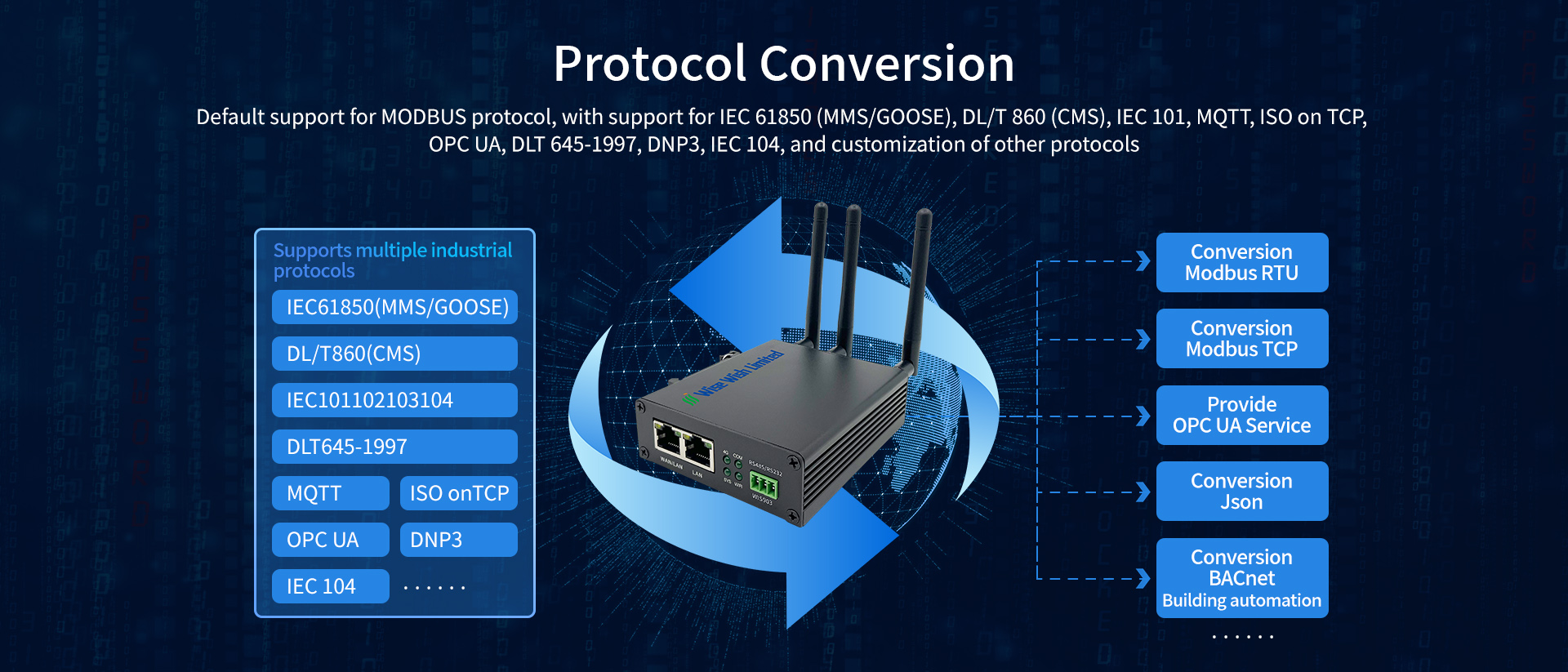
Protocol Conversion and Adaptation in Industrial Gateways
In modern industrial environments, the diversity of devices and systems is increasing, leading to growing complexity in communication protocols. Industrial gateways serve as bridges connecting different devices, systems, and networks, making their protocol conversion capabilities particularly important. Protocol conversion is not only a key technology for achieving device interoperability but also a core driving force for advancing industrial automation and smart manufacturing.

Technical Perspective
Efficient Data Parsing and Mapping
Protocol conversion in industrial gateways relies on efficient data parsing and mapping mechanisms. Parsers are responsible for identifying and extracting key information from input data packets, while mappers convert this information into the format required by the target protocol. This process must consider multiple factors such as data type, length, and encoding to ensure data integrity during conversion. Additionally, gateways often support multithreading to enhance the speed and efficiency of data conversion.
Dynamic Translation Layer Design
The translation layer is one of the core components of protocol conversion, achieving flexible conversion between different protocols through a dynamic rules engine. These rules can be adjusted according to specific application scenarios, supporting custom data formats and command sets. This flexibility enables gateways to adapt to changing industrial environments and quickly respond to new communication needs.
Software and Hardware Integration
Flexibility of Middleware Architecture
Middleware acts as a bridge in industrial gateways, supporting various communication protocols while providing a unified interface for application layer calls. Middleware typically employs a microservices architecture, allowing functional modules to be developed and deployed independently, greatly enhancing system scalability and maintainability. Furthermore, middleware supports load balancing and failover to ensure system stability under high load conditions.
High-Performance Hardware Platforms
To support complex protocol conversion tasks, industrial gateways are usually based on high-performance hardware platforms. These platforms include multi-core processors, high-speed memory, and dedicated accelerators (such as FPGAs or GPUs) to meet real-time data processing demands. Additionally, gateways must have good environmental resilience, such as dustproofing, waterproofing, and high-temperature resistance designs, to suit various industrial field conditions.
Industrial Automation Perspective
Device Interoperability and Standardization
In industrial automation, achieving device interoperability is crucial. Due to the diverse protocols used by equipment from different manufacturers, standardization efforts are particularly important. Industrial gateways promote seamless communication between devices by supporting various international standards (such as OPC UA, Modbus, PROFINET), thereby advancing industry standardization processes. This not only simplifies system integration but also reduces operational costs.
Data-Driven Decision Making in Smart Manufacturing
In smart manufacturing environments, data-driven decision-making is an important means of improving production efficiency. Industrial gateways convert data from field devices into formats recognizable by cloud platforms, enabling real-time data transmission and analysis. This allows enterprises to timely obtain production line status and make optimization adjustments based on data analysis results. For example, predictive maintenance can identify equipment failure risks in advance, reducing downtime and enhancing production continuity.
Conclusion
In summary, the importance of industrial gateways in protocol conversion cannot be underestimated. They not only resolve communication barriers in multi-protocol environments but also provide infrastructure support for enterprises to achieve smart manufacturing. Through efficient protocol conversion, industrial gateways enable different devices and systems to work together seamlessly, facilitating smooth data flow and real-time analysis. This capability not only enhances production efficiency but also increases enterprise flexibility and adaptability.